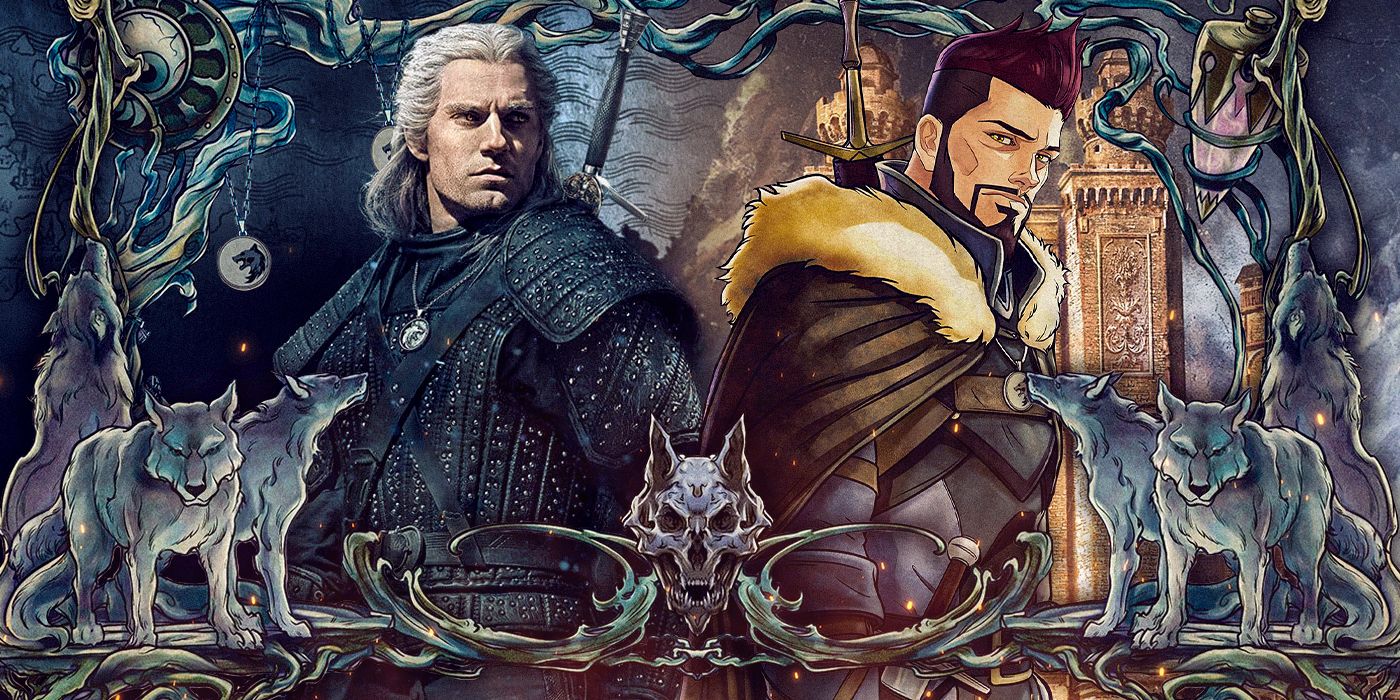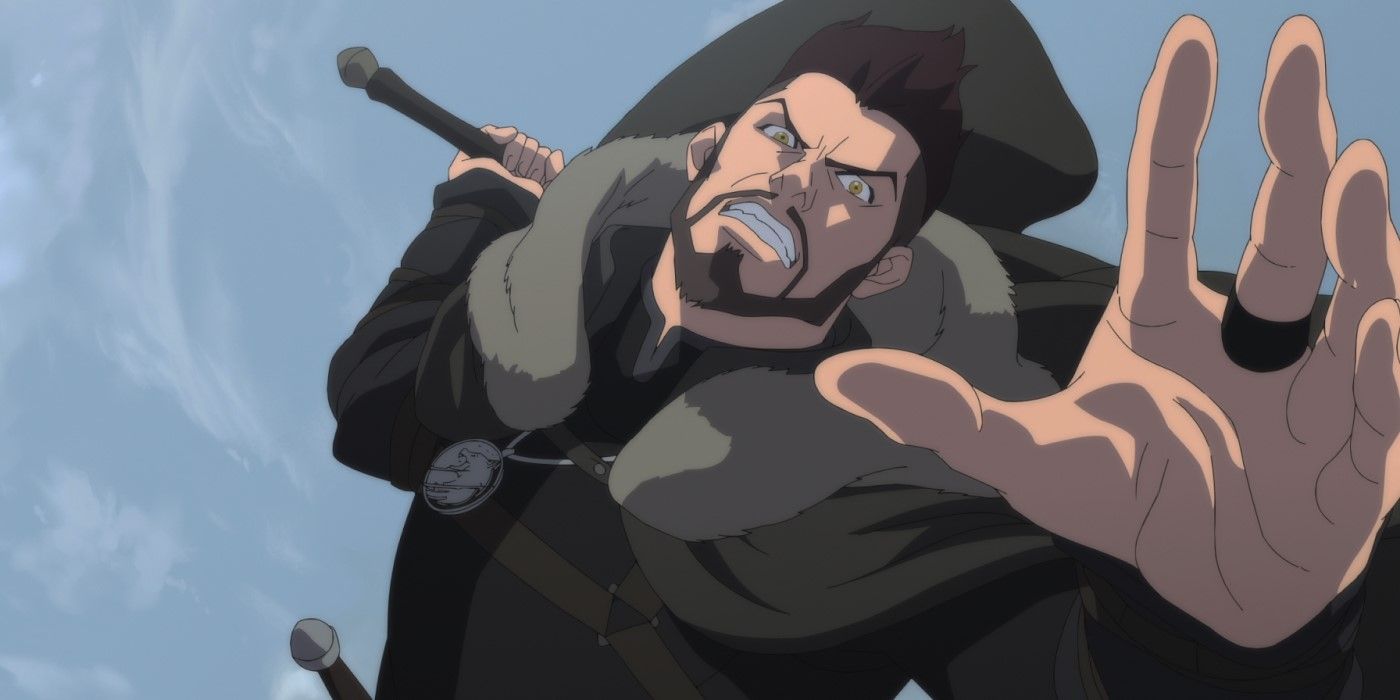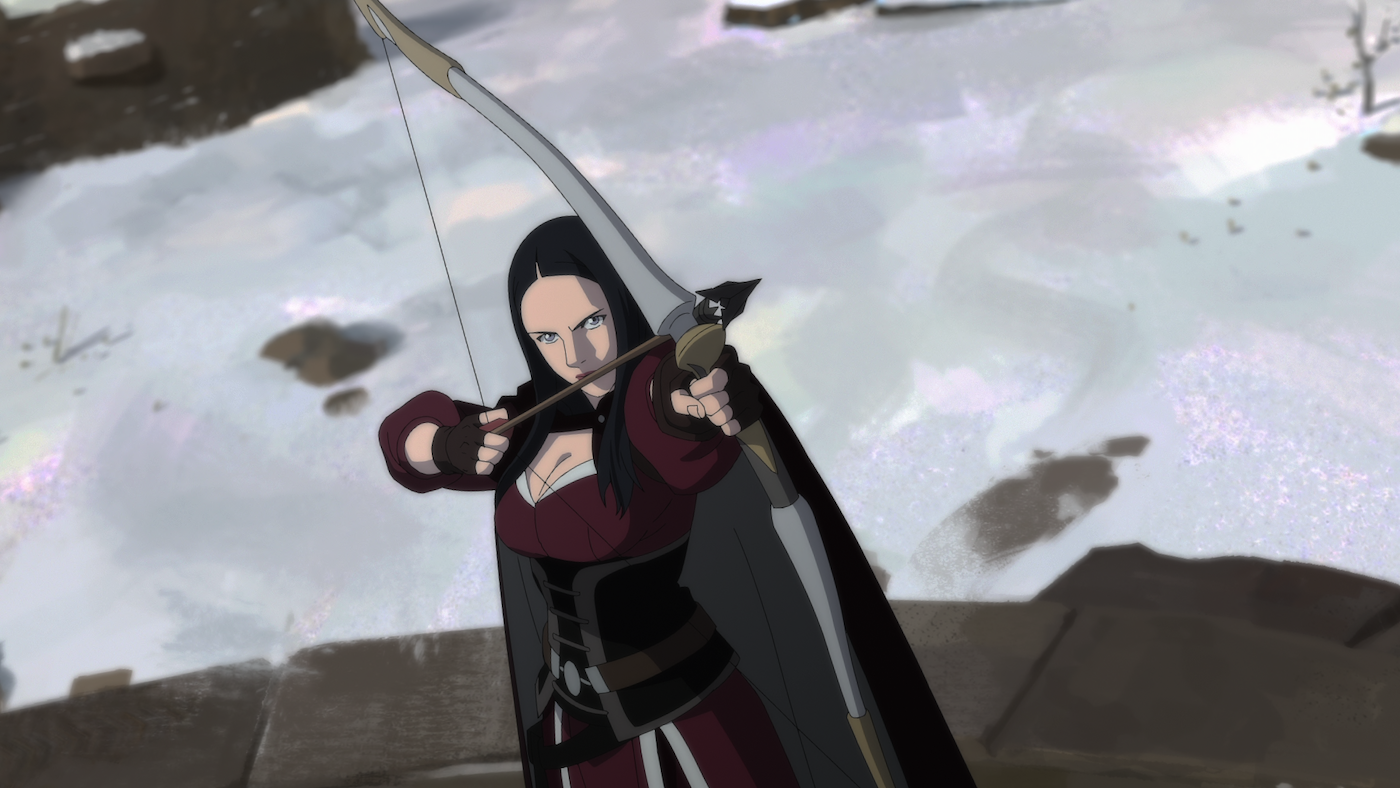One of the most fascinating parts of The Witcher franchise is the monster-slaying witchers themselves. In Netflix’s most recent addition to their The Witcher franchise, the animated Nightmare of The Wolf, fans learn more about the backstory of the Witcher School of the Wolf. This is the place where Geralt’s mentor, Vesemir, trained with his peers until the Sacking of Kaer Morhen doomed the witchers of Kaedwan forever.
Let’s go over everything shared in this prequel story (and a little bit more).
Origin of Witchers
The creation of Witchers coincides with the settling of Temeria, the land where The Witcher series takes place. In an attempt to fight back against the indigenous monsters of the area, kings and sorcerers worked together to create the Witchers. While the mages were disappointed in their creation (leading most of them to abandon the efforts and condemn Witchers) a handful stayed behind and worked with the nobility to create the Order of Witchers. There, they refined the mutation practices and trials.
Now, using the help of mages and mutagenic mushrooms, herbs, and organic stimulants, Witchers gained superhuman abilities. After they were mutated, the pro-Witcher mages also helped them learn to use magical sigils and potions to augment their powers.
Vesemir’s story also explains how Witcher populations were often fueled by unwanted children and people using child recruits as payment for jobs they can’t afford. Vesemir was a very rare child that willingly joined the order. At first, these practices helped keep the Order of Witchers alive, but over time, it resulted in too many warriors compared to the dwindling monster populations.
The Trial of Grasses
The Trial of Grasses is mentioned throughout Geralt’s adventures as the grueling test that Witcher elders put young children through to make them full Witchers. The trials help progress their mutations, like getting their cat-like eyes that help them see in the dark and in some cases, like Geralt, turn their hair white.
In Nightmare of The Wolf, viewers experience Vesemir’s trial, where most of his fellow Witcher hopefuls lost their lives in the process. He sees monsters brutally rip them to shreds and barely survived himself, waking up in an infirmary many hours (if not days) later.
Witcher Schools
Once the Order of Witchers fractured, they splintered into seven Witcher schools. Nightmare of the Wolf only follows the School of the Wolf, the central school that housed the Order’s mages and the majority of its Witchers until the Sacking of Kaer Morhen.
Over the centuries, different off-shoots broke off from the main school for various reasons. For example, the School of the Cat is a group of Witchers who abandoned their masters and trains women and non-humans in their fighting styles, magic, and potions. The School of Vipers was made of Witchers willing to accept monster contracts as well as assassination hits.
Others are schools that spread across the land, like the School of Manticores, which is across the desert, or the School of Bear, which is hidden up in the mountains. However, it’s implied that no other schools have mages trained in making Witchers, making them a dying breed.
Because of these other schools, Vesemir and his charges aren’t the only Witchers left alive, but they are still few and far between. Nightmare of The Wolf sets up the reality that Geralt faces in his tales, as one of the last Witchers alive.
Witcher Reputation
Despite their powers and skillsets being useful, Witchers frightened people. Their unusual abilities, looks, and lifestyle made them outcasts that people looked down upon and shunned. Nightmare of The Wolf makes this clear because even though Vesemir and his friend Luka save people, they are still accosted by locals and guards.
The situation is tenuous because the people of monster-filled Temeria need Witchers. However, the service they offer has never been revered, like soldiers or court mages. Witchers may have worked with peasants, nobles, kings, and mages, but they’ve rarely been welcomed in any of those circles. Because of that, the relationship between witchers and mortals became very transactional, separating them further.
Witchers are often shunned and even attacked during times of social unrest. Nightmare of The Wolf makes this clear when it describes Tetra Gilcrest’s attack on Kaer Morhen as “inevitable.” In turn, that is what led Witchers like Delgan to turn to manufacturing monsters when their jobs were in jeopardy; if there were no monsters, other humans had no more need for them.
It is only during Geralt’s time that Witchers are somewhat improving their relationship with the rest of the land. That in itself is because there are so few Witchers left and, with the large rise of undead, monsters, and world-ending threats, Geralt’s rare monster-killing fame begins to supersede many people’s fear of Witchers. However, The Witcher 3 still includes quite a few tense situations with prejudiced characters.
Sacking of Kaer Morhen
As mentioned, people treating Witchers so poorly turned Delgan and the mages of Kaer Morhen toward making mutant hybrids for their own Witchers to fight. They felt it was the only way to secure their community against those who hated them. However, this scheme was discovered by the very anti-Witcher sorcerer, Tetra Gilcrest, and she rallied an army of angry peasants and hybrids to attack Kaer Morhen and exterminate the Witchers as if they were rats, not people.
Tetra lost her life in her campaign, but so did the majority of Witchers and all Witcher-creating mages perished in the battle. Only Vesemir and four young Witcher survivors (Eskel, Lambert, Geralt, and Remus) were left in the aftermath, which leads up to the Witcher family dynamics that fans see in The Witcher books, games, and Netflix series.
Geralt’s Generation
Nightmare of The Wolf shows the tale of the Witchers that explains exactly why Vesemir taught Geralt as he did, and why Geralt became the principled, however grumpy, man fans all know and love.
Unlike other generations which were filled with students and Witchers, Vesemir was the only veteran Wolf School Witcher left to train and raise the four surviving Witcher children. This is why Geralt and his fellow young trainees grow to be like siblings, and why they all view Vesemir not just as a mentor, but a father figure.
Because the School of Wolf Witchers nearly went extinct, the monsters in the area were able to repopulate. That’s why, in Geralt’s time, monsters are again plentiful and Witchers are gravely needed in the world.
However, Vesemir’s tough, first-hand experience with seeing his entire community destroyed left a mark on Geralt and is likely why he has such a hard “I don’t like to get involved” stance (even though he always gets involved anyway).
As a final fun fact for new fans heading into Season 2, despite the fact Geralt gives his adopted daughter, Ciri, Witcher training, she is not and never will be a Witcher. She may know their ways and carry a wolf medallion, but she never went through mutations. Instead, she relies on her natural powers in sorcery to supplement her abilities.



